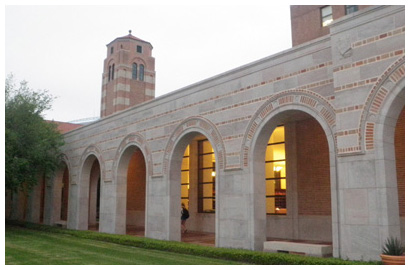Most metros add construction jobs in June; second-quarter employment costs stay mild Editor’s note: Construction Citizen is proud to partner with AGC America to bring you AGC Chief Economist Ken Simonson's Data DIGest. Check back each week to get Ken's expert analysis of what's happening in our industry.
Editor’s note: Construction Citizen is proud to partner with AGC America to bring you AGC Chief Economist Ken Simonson's Data DIGest. Check back each week to get Ken's expert analysis of what's happening in our industry.
From June 2013 to June 2014, construction employment increased in 215 out of 339 metropolitan areas for which the Bureau of Labor Statistics (BLS) reports construction data, declined in 80 and was unchanged in 44, according to an analysis that AGC released last Wednesday. (The agency combines mining and logging with construction in most metros to avoid disclosing data for industries with few firms. Because metro data is not seasonally adjusted, comparisons with months other than June are not meaningful.) Dallas-Plano-Irving again added the most construction jobs in the past year (11,700 combined jobs, 10%), followed by the Los Angeles-Long Beach-Glendale division (10,000 construction jobs, 9%) and the Chicago-Joliet-Naperville division (8,200 construction jobs, 7%). The largest percentage gains occurred in Monroe, Mich. (29%, 600 combined jobs); Lake Charles, La. (25%, 2,700 construction jobs) and Pascagoula, Miss. (25%, 1,500 combined jobs). The Bethesda-Rockville-Frederick, Md. division lost the most jobs (-4,200 combined jobs, -13%), followed by Phoenix-Mesa-Glendale (-2,900 construction jobs, -3%) and the Gary, Ind. division (-2,300 construction jobs, -12%). The steepest drop was in Cheyenne, Wyo. (-18%, -700 combined jobs), followed by -13% in Bethesda-Rockville-Frederick and Vineland-Millville-Bridgeton, N.J. (-300 combined jobs); and -12% in Gary and Steubenville-Weirton, Ohio-W.V. (-200 combined jobs). Only 26 metro areas set new June construction employment highs, led by El Centro, Calif. (23%, 500 jobs higher than in June 2013).
The employment cost index, a weighted average of all wages and salaries, benefits, and required employer payments such as unemployment and worker’s compensation, rose 0.8% in the first quarter, seasonally adjusted, for all private-sector employees and 0.3% for construction industry employees, BLS reported Friday. From June 2013 to June 2014, compensation rose 2.0% for all private industry and 1.3% for construction. The year-over-year rise in construction compensation slowed for the fourth consecutive quarter. However, the figures for construction may understate the increases in both residential and nonresidential segments because employment grew more rapidly in the lower-paid residential portion (4.9% from June 2013 to June 2014) than the higher-paid nonresidential segment (2.2%). Wages and salaries in construction grew at nearly the same rates (0.3% in the second quarter, 1.2% over four quarters) as total compensation (0.3% and 1.3%, respectively), implying that benefits increased at a similar rate. (BLS reports the rate of benefits increases overall but not for construction.)
Real (net of inflation) gross domestic product (GDP) jumped 4.0% at a seasonally adjusted annual rate in the second quarter (Q2), the Bureau of Economic Analysis (BEA) reported last Wednesday. The decline for the first quarter (Q1) was revised to a more moderate -2.1% from the prior estimate of -2.9%. Real investment in new and existing structures was even more volatile. BEA uses Census Bureau data on construction spending to calculate investment in structures, a component of GDP, but BEA groups structures differently. Real private fixed investment in new structures (including mines and wells) increased at a 5.4% rate in Q2, up from a 3.1% rate in Q1, with similar changes for new nonresidential structures (5.3% and 2.9%, respectively) and new residential structures (5.6% and 3.3%). Among nonresidential categories, real investment in commercial and health care structures rose at a 1.6% rate in Q2 after falling 8.8% in Q1; manufacturing structures, -10% and 2.9%, respectively; power and communication structures, -11% and 20%; and other nonresidential structures (“primarily…religious, educational, vocational, lodging, railroads, farm, and amusement and recreational structures, net purchases of used structures, and brokers' commissions on the sale of structures”), 9.1% and -17%. Real investment in new multifamily structures soared 19% and 25%, respectively; and new single-family, 5.8% and 7.9%. Real government gross investment in structures climbed at a 14% rate in Q2, reversing a 12% rate of decline in Q1. The price index for real private investment in new nonresidential structures rose at a 1.1% rate in Q2 and 2.3% in Q1; new residential structures, 0.1% and -2.7%; and government structures, 1.6% and 2.1%.
Construction at private colleges is being affected by unfavorable demographic and financial trends. Marketplace Radio reported last Monday, “In the '90s, birth rates fell nationally. On top of that, lots of people migrated south and west. That all spells a decline in high school graduates in the Northeast and Midwest today. That's according to Brian Prescott, who directs research at the Western Interstate Commission for Higher Education….Prescott estimates there's been a 7% drop in high school grads in the middle of the country just over the past six years.” A study released Friday by Sallie Mae and Ipsos, “How America Pays for College 2014,” found: “This year, families reported the highest enrollment in two-year public colleges since the survey began [in 2008] (34%, up from 30% last year). In addition, students opted to attend in-state institutions (69%), cut back on entertainment (66%), or live closer to home (61%) or at home (54%), among other cost-saving measures, to help reduce the cost of college.” Census Bureau data released on July 1 showed private higher education construction spending dropped 4.2% in the first five months of 2014 compared with January-May 2013, following a 7.6% fall from 2012 to 2013.
View June metro employment numbers by state and rank.
The Data DIGest is a weekly summary of economic news; items most relevant to construction are in italics. All rights reserved. Sign up at www.agc.org/datadigest.
AGC's Data DIGest: July 28-31, 2014
by Ken Simonson | August 04, 2014



Add new comment